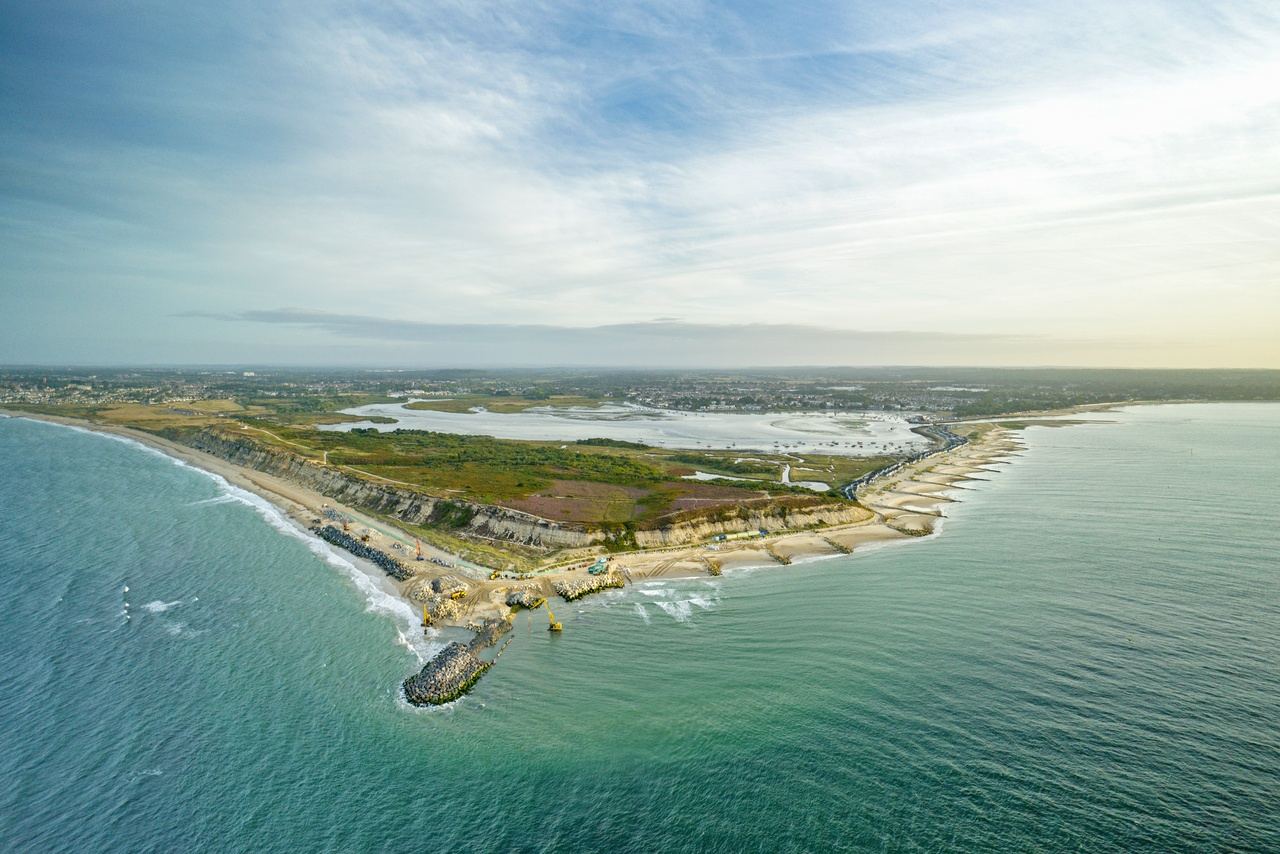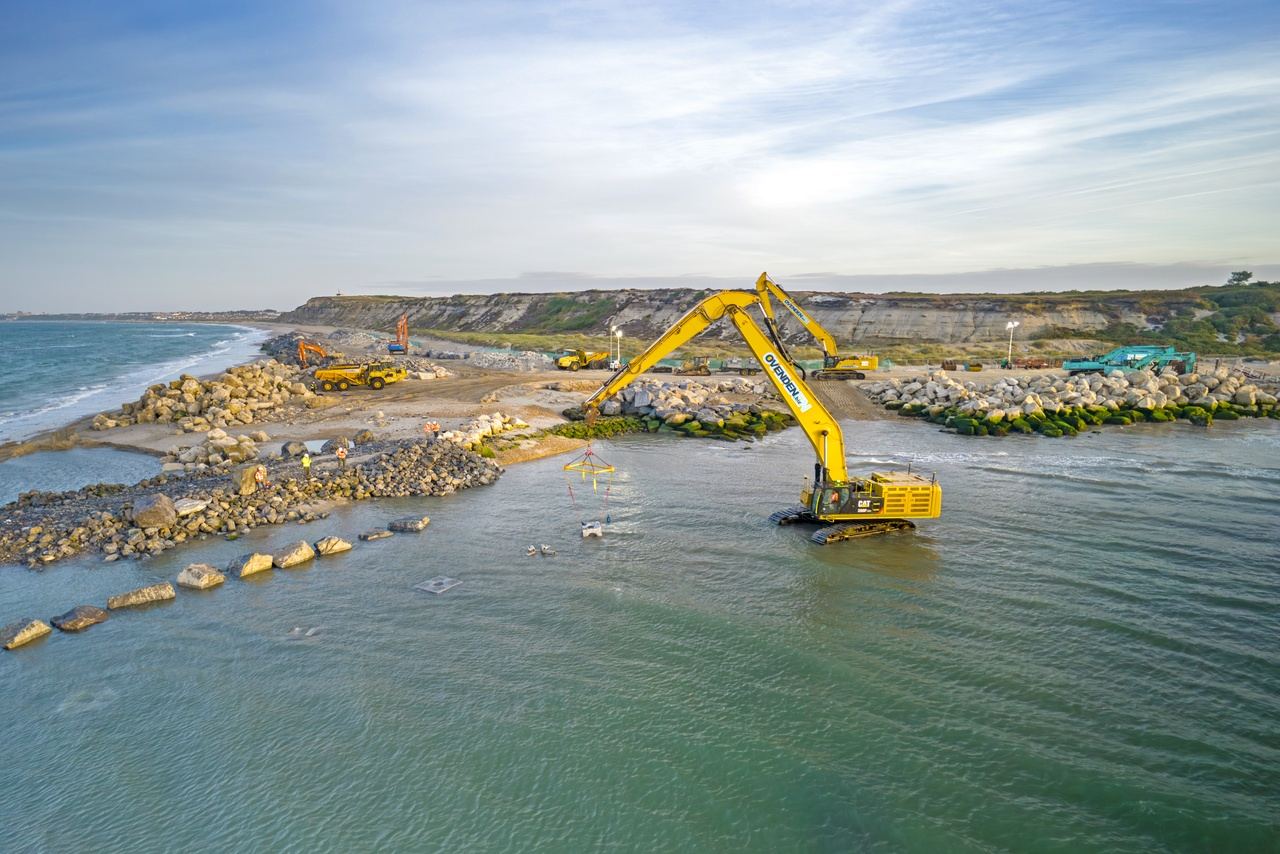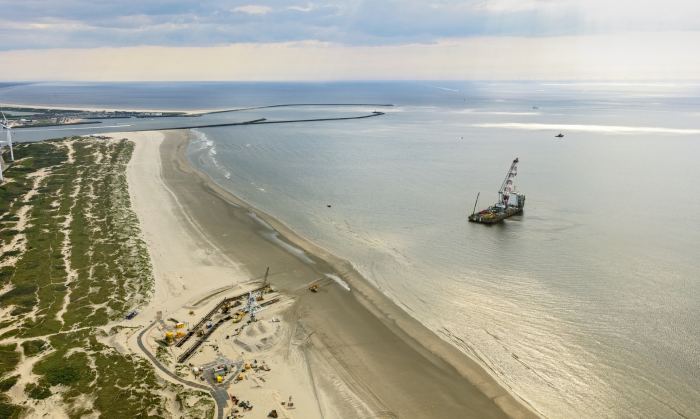A relatively straightforward project in the Hengistbury Head nature reserve in southern England has become the flagship effort for innovative coastal defense. Besides renewing the existing groyne, Boskalis Westminster installed thirty artificial reefs to improve the area’s ecology. “This project has shown us that artificial reefs have significant added value as part of coastal protection projects,” says project manager Philip Lamb.
Weighing more than seven tons each, the MOSES reefs by ReefSystems are the same reef blocks used in 2021 for a pilot project of Boskalis’ Artificial Reefs Program (ARP) off the coast of Kenya. Twenty of these have now also been installed in the British part of the North Sea, right at the end of the groyne that has protected the Hengistbury Head nature reserve from North Sea forces since 1939. Along the groyne, another five reef blocks are placed alongside five artificial reefs by Art Marine.
The installation of the artificial reef off the English coast marks a major milestone for Boskalis. It is, on this scale, the first commercial application of artificial reefs. This demonstrates that not only Boskalis sees the potential in combining coastal defense with artificial reefs, but governments and commercial clients also recognize this value. Following the earlier pilot project with this type of artificial reef in Kenya, an extensive validation process was conducted before installation in the North Sea to ensure the reefs could withstand the environment there. “Kenya’s climate is completely different from England’s,” says environmental engineer Renske Free. “Thanks to the tests in the North Sea, we were able to demonstrate that these reefs remain stable in the water and significantly improve the ecology.”
Coastal Protection and Ecological Development
In southern England, Boskalis essentially carried out two projects in parallel. Lamb: “Because these kinds of dual projects are new for us, our project team had to adapt significantly. Additionally, we had to integrate the reef installation into our schedule for the groyne. Once we got the hang of installing the reefs from the water, we really started to enjoy it and saw that this is a wonderful combination of coastal defense and ecological development. It’s a combination that clients in the United Kingdom are increasingly requesting and where we are now gaining incredibly valuable experience.”


Although the reefs installed off the Hengistbury Head coast will slightly reduce wave strength, they primarily serve an ecological function. Even so, Lamb views the ‘combination project’ as the coastal defense of the future. “Not only because of the demand from clients and governments for artificial reefs but also for ourselves. When you see the positive attention this project generates and the impact the reefs – based on earlier tests – have on the ecosystem, you can’t help but support it,” says Lamb. “To be fair, before this, we also thought that placing stones with relief patterns in the water and letting them ‘go green’ would suffice for helping the ecology. But this project has shown us that artificial reefs offer significant added value.”
